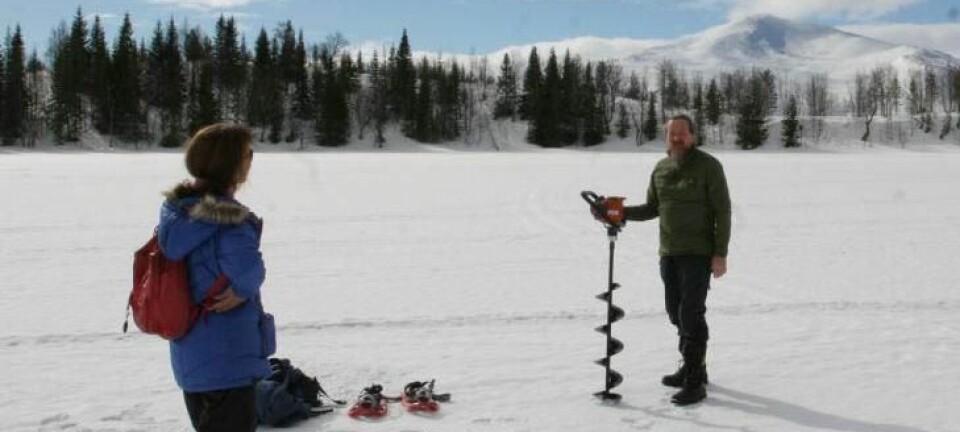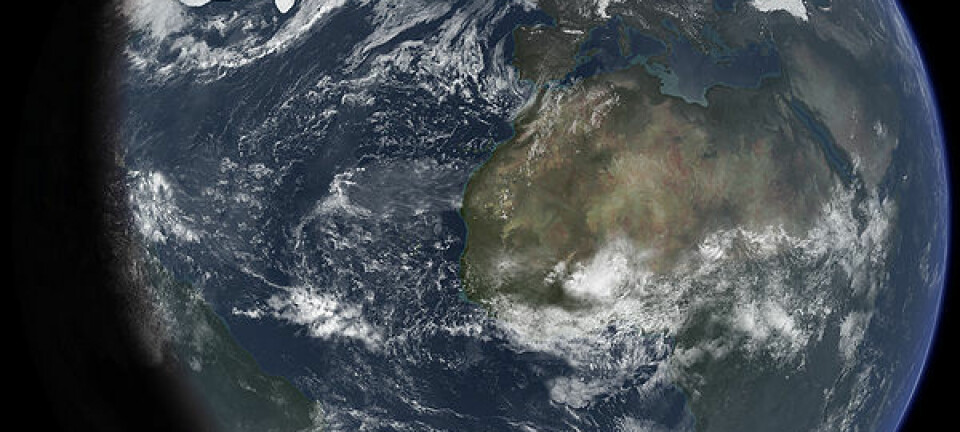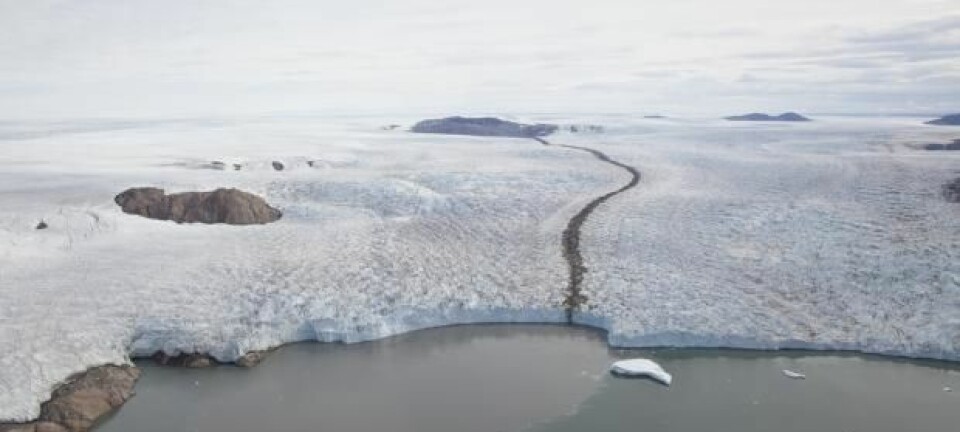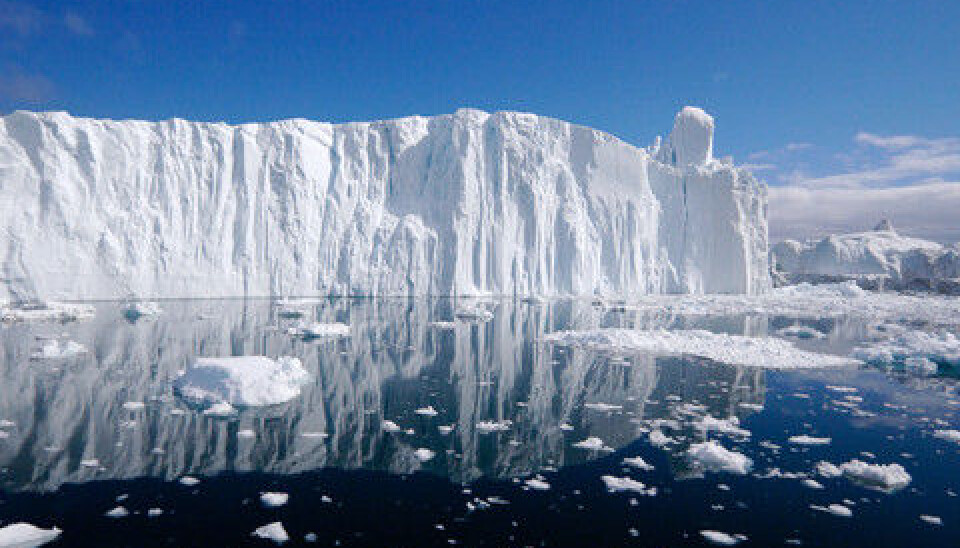
Surprisingly few major Ice Ages in southwest Greenland
The waters off southwest Greenland have escaped extremely large and thick ice sheets during most of the Ice Ages, new research reveals.
The Earth’s northern hemisphere has experienced more than 30 Ice Ages over the past few million years.
Here, thick ice sheets have covered much of North America and as far down into Europe as France.
New research from The Geological Survey of Denmark and Greenland (GEUS) shows that although Greenland has gone through many Ice Ages, only five of them have caused the ice in southern Greenland to grow so large and thick that it covered the entire shelf offshore southern Greenland.
This surprised the researchers:
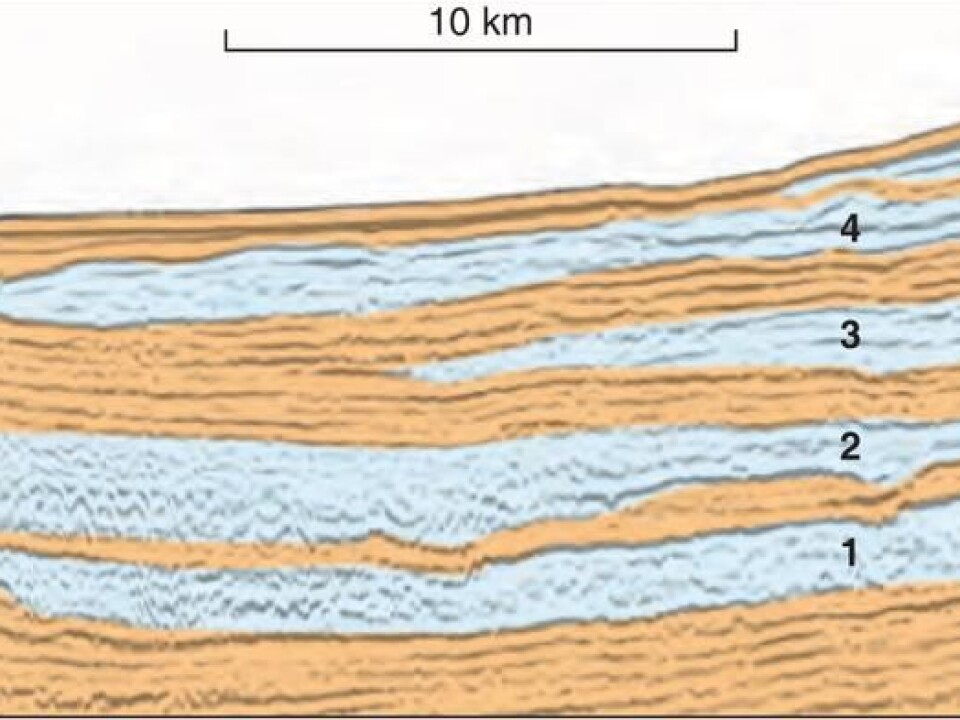
”In our seismic analyses of the deep seabed off southwest Greenland we only observed sediments that stem from five extreme Ice Ages. This is a different number to the more than 30 Ice Ages we know have occurred in the northern hemisphere,” says geologist Tove Nielsen, a senior researcher at GEUS, who together with her colleague Antoon Kuijpers conducted the new study.
The study, published in the journal Scientific Reports, may prove important in the refinement of our climate models.
Thick wedges inform us about the Ice Ages
The researchers analysed seismic measurements of the seabed in the Davis Strait off western Greenland.
These measurements allowed the researchers to gain an insight into the composition of the subsoil down to several kilometres below the seabed surface.
Our analyses suggest that there was an extreme Ice Age far earlier than previously assumed.
Tove Nielsen
Here they observed five so-called major glacigenic debris flow (GDF) units that stood out from the rest of the subsoil.
These units are more than a hundred metres in thickness, and the organisation of the material inside them is more chaotic than the rest of the subsoil.
“Our interpretation is that these wedges are the sediments that the glaciers have deposited over the edge of the continental shelf during the Ice Ages,” says Nielsen.
“This cocktail of rocks, sand and clay has then slid down this slope towards the deep sea and has settled in an underwater groove on the seabed. Since there is no ice cap there to shovel the materials over the edge, the sea current flowing through the Davis Strait deposits the materials differently. That’s what makes it possible for us to observe differences in the layers in our seismic measurements.”
When the researchers look at seismic data from further up north, they can see that the number of the chaotic deposits in the seabed starts to rise again, which means that there have been more great Ice Age glaciers there than further south.
Surprisingly old Ice Age
Another surprising result from the study is the dating of the Ice Ages.
Using seismic data combined with drillings in the area, the researchers can date the five different extreme Ice Ages as being between 4.5 million and 160,000 years old.
The oldest one of these surprised the researchers:
”It is often said that the extreme Ice Ages that could cover Greenland all the way out to the continental shelf didn’t start until 2.5 million years ago,” says Nielsen.
“But our analyses suggest that there was an extreme Ice Age far earlier than previously assumed.”
This also means that scientists may need to reassess the importance of the heating season three million years ago, which is usually considered to be the beginning of the extreme Ice Ages.
A useful tool for future climate models
The new findings are the first of their kind to show that we cannot take for granted that the Ice Ages were equally extreme. The findings also suggest that even the northernmost sea areas may not necessarily have been entirely covered by ice during all of the more than 30 Ice Ages.
Other studies have shown that the area off the coast of southeast Greenland has probably not been entirely covered with ice during all the Ice Ages either.
This may have an effect on the climate models that scientists use to predict our future climate and to model the behaviour of the inland ice in various climatic conditions.
”Most of the existing climate models are based on, among other things, data of how the ice behaves on the northern hemisphere,” she says.
“But if these preconditions are partly incorrect, which may be the case, our findings can help adjust these models.”
--------------------------
Read the Danish version of this article at videnskab.dk
Translated by: Dann Vinther
